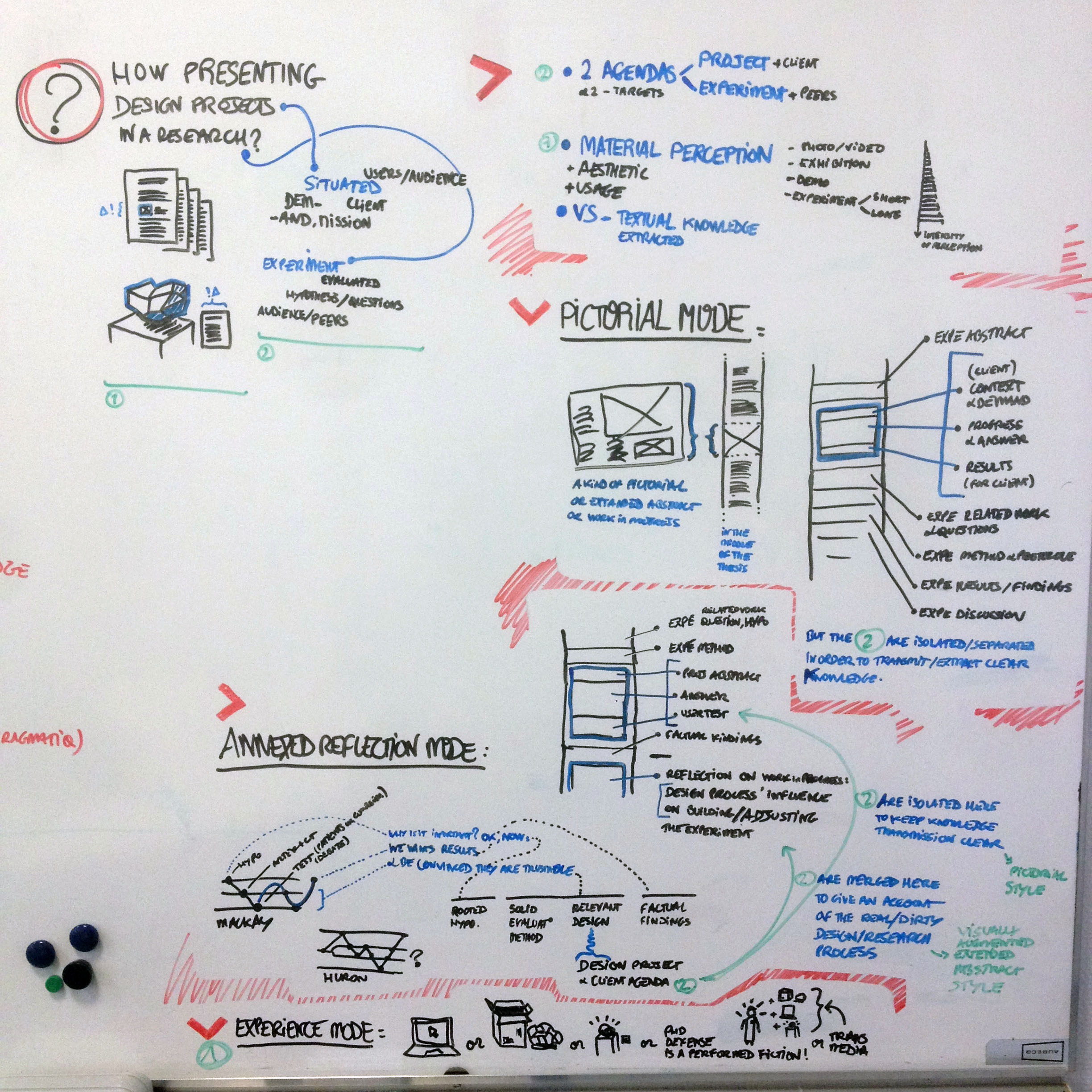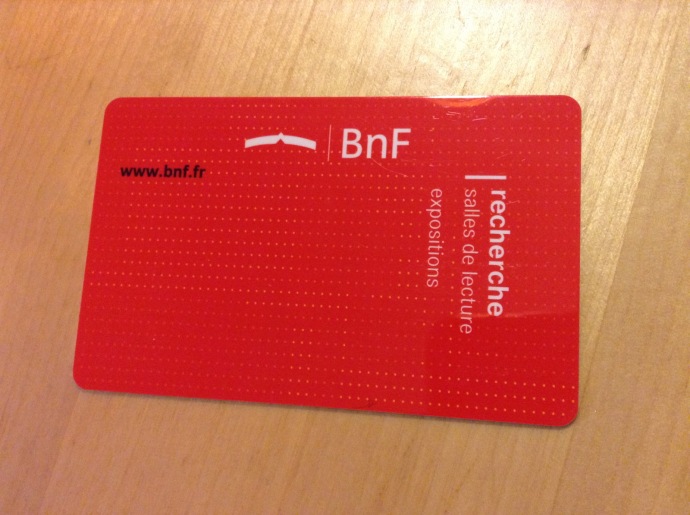
I struggle to chose a way to present my design projects in the manuscript of my thesis, I relay here my random thoughts.
Why presenting a detailed account of a design project, to proof one is a good designer? That would not be part of the desired knowledge shared in a research. It makes sense to detail a design project and its progress steps when design choices and the whole work-in-progress experience generated knowledge that informed the experiment (ie. adjusting the design of the artefact or the one of the experiment protocol). Therefore, if one needs to support a project presentation with something else than text, what would be relevant?
After a quick brainstorm, I came up with three modes for presenting design project along a PhD thesis – this need to be discussed, corrected, mixed and/or combined.

What is an appropriated format for design research publication? And especially research through design, within a PhD thesis.
After a quick brainstorm, I came up with two main challenges due to the nature of design artefacts – indeed, they are aesthetically “experienciable”.
- Challenge 1: text does not provide material/aesthetic perception of artifacts (from photos/videos, to exhibitions, to demos, to experiment – one-shot or period of time)
- Challenge 2: there are 2 different agendas in a situated design projects (client/project agenda + peers/experiment agenda
Challenge 1: visually and aesthetically supported publications
As I see it, behind all the publication question resides in particular two motivations: easing access of design trained researchers to the “production” and “reception” of knowledge. As an answer to this, various formats in the design and HCI communities tend to leave more space for visuals (Pictorials, extended abstracts, work in progress…). However, if a publication is essentially visually supported: how could it be relevant for the research community as well as for non-researchers (designers)?
A step further would be to wonder, from a more general point of view, how to optimise the text-visual ratio in a visually-supported publication? Inspired by the DIS pictorial format guidelines, I would suggest that:
• visuals have to create a narrative on their own;
• work in progress documentation is only shown if it generated knowledge that strongly informed the design of the artifact or the experiment itself;
• text must not describe (repeat) visuals, it might reveal minutia or extract meaning from linking disparate content;
• Merging findings and discussion might make the presentation more concise;
• Give hints on how to exploit the knowledge produced;
• If pictorials are injected in a thesis: say a word on how it relates to the experiment/whole thesis.
But still, formats as pictorials have present many limitations : how can the layout design enhance the overall aesthetic and functional experience of getting the paper’s content? Is this format similar to the take-away section of a prior (referenced) paper. Then, is the pictorial format confined to be an illustrated case study, or the illustration of a previous paper? Does its restricted amount of text makes it dependent to older research work? Does it contribute to creating a trans-media research publication strategy for authors?
How to go beyond visuals when aesthetically presenting a design project, within a PhD thesis? I would suggest enhancing the reader (or PhD thesis jury) experience of the project, aside of the reading, thanks to:
• Photos, videos, website
• Postal shipped prototype
• Exhibition
• Defense as a performance
• Trans-media (combining the previous propositions)
Pictorial Mode:
Here, project agenda and experiment agenda are separated to make the research contribution clearer. Imagine this section organization along the thesis manuscript:
• Expé abstract
—• Proj abstract
—• Proj context, demand, client
—• Proj work in progress, answer
—• Proj user test & results (for client)
• Expé related work, questions, hypo
• Expé méthode, protocol
• Expé factual findings
• Expé discussion
Annexed Reflection Mode:
Here the last section allows to reveal the dirty reality of the work in progress phase, and how it informed the making of the experiment. As shown in the picture, this is Inspired by Wendy Mackay triangulation across disciplines diagram ( example) (check also Samuel huron’s PhD thesis defense rework version). Imagine this section organization along the thesis manuscript:
• Expé abstract
• Expé related work, questions, hypo
• Expé méthode, protocol
—• Proj abstract
—• Proj answer
—• Proj user-test
• Expé factual findings
• Expé discussion here or later?
• Expé/Proj interwoven annexed reflection on how the design process influenced experiment adjustments
This last mode is describe in the next picture/brainstorming.

Discussion:
Please, feel free to comment this blogpost, this is a work in progress. I will update this Discussion section later on.
References:
• Wendy E. Mackay and Anne-Laure Fayard. 1997. HCI, natural science and design: a framework for triangulation across disciplines. In Proceedings of the 2nd conference on Designing interactive systems: processes, practices, methods, and techniques (DIS ’97), Susan Coles (Ed.). ACM, New York, NY, USA, 223-234. DOI=http://dx.doi.org/10.1145/263552.263612









